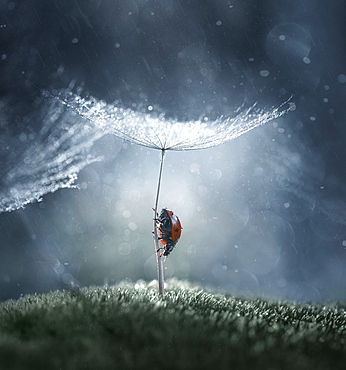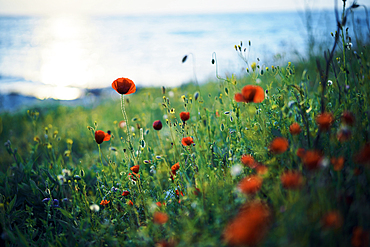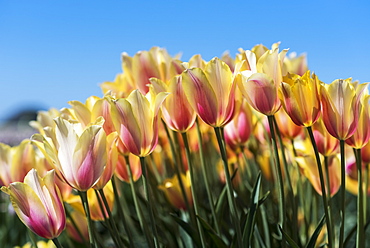Recent searches
Loading...
860-292022 - Scarlet dragonfly (Crocothemis erythraea) and Damselfly, Emilia-Romagna, Italy
860-291979 - Mullein Moth (Shargacucullia verbasci) caterpillar on a stem of Common Mullein (Verbascum thapsus) in spring, Countryside near Hyeres, Var, France
1116-52837 - African bush elephant (Loxodonta africana) in the water washing and lifting river grass with its trunk and tusks in Chobe National Park, Chobe, North-West, Botswana
832-399937 - Western marsh-harrier (Circus aeruginosus), female calling on tree stump, Toledo Province, Castilla- La Mancha, Spain, Europe
832-399938 - Western marsh-harrier (Circus aeruginosus), female mantling, on tree stump, Toledo Province, Castilla- La Mancha, Spain, Europe
832-399940 - Western marsh-harrier (Circus aeruginosus), female on tree stump, Toledo Province, Castilla- La Mancha, Spain, Europe
832-399941 - Western marsh-harrier (Circus aeruginosus), female on tree stump, Toledo Province, Castilla- La Mancha, Spain, Europe
832-399948 - Steppe buzzard (Buteo buteo) on tree stump, Toledo Province, Castilla-La Mancha, Spain, Europe
832-398658 - Great spotted woodpecker (Dendrocopos major), greater spotted woodpecker male hammering on tree stump in autumn forest
832-398277 - Overhead view of cleaver, fork and knife on wooden stump
832-398278 - Top view of cleaver and knives on wooden stump
1174-11350 - Studio shot, a stem of small white flowers in a pink recycled plastic mesh vase.
1174-11351 - Studio shot, an orange background and a stem of a foxglove with blue flowers unfurling.
1178-43059 - Caucasian teenage girl holding bouquet of flowers
832-396928 - Tawny owl (Strix aluco), Nestling on tree stump, Hattingen, Germany, Europe
832-396927 - Tawny owl (Strix aluco), Nestling on tree stump, Hattingen, Germany, Europe
832-395839 - Hands of a farmer holding a wooden handle, Bavaria, Germany, Europe
1178-41381 - Close up of row of green peppers on red wooden table
1178-39751 - Artisanal cheese and fruit on wooden cutting board
746-90153 - Close-up view of grass in a field of cobs, Italy, Europe
1350-4052 - Mangosteen fruit for sale on the street in Guilin, China.
1348-5357 - Representation of adult stem cells, multipotential progenitors, and committed precursors.
1116-51250 - Kameyama bamboo forest; Kyoto, Kansai, Japan
1116-52069 - Close up of a cucumber (Cucumis Sativus) on the vine with water droplets; Calgary, Alberta, Canada
1116-52075 - Close up of a red poppy flower; Calgary, Alberta, Canada
1116-52067 - Close up of green round kabocha squash (Cucurbita maxima) hanging from the vine in a garden; Calgary, Alberta, Canada
1116-51425 - Close-up of decorative log cake with pine needle trimmings on a wooden table; Studio
1116-51249 - Kameyama bamboo forest; Kyoto, Kansai, Japan
1116-52065 - Close up of a radish plant in the soil in a garden; Calgary, Alberta, Canada
1116-51248 - Kameyama bamboo forest; Kyoto, Kansai, Japan
1116-52073 - Close up of orange cherry tomatoes on the vine with water droplets; Calgary, Alberta, Canada
832-393386 - Dog daisy (Leucanthemum vulgare), stem with flower, Germany, Europe
860-289912 - Black ant (Lasius sp) on a stem, Lorraine, France
1350-2839 - Hands removing stems from dried red chili peppers at outdoor market, Debre Berhan, Ethiopia
1350-2578 - Feather stars, Oxycomanthus bennetti, Temple of Doom, Great Barrier Reef, Australia (S. Pacific).
1178-32619 - Close up of African woman eating apple
1349-1071 - Human Induced Pluripotent Stem Cells, LM
1349-1111 - Human Induced Pluripotent Stem Cells, LM
860-289111 - Cutting the bignone (Campsis radicans) 3. Reduce the leaf area
860-289101 - Cutting of autumn sedum (Hylotelephium spectabile) from leaf cuttings, in summer.
860-289145 - Marrow-stem kale (Brassica oleracea medullosa) This cabbage is used as a vegetable in Germany and the southern countries of Europe, but shunned in France.
860-289113 - Cutting the bignone (Campsis radicans) 3. Reduce the leaf area. The cuttings are carried out before mid-September preferably or after, under shelter.
1348-1327 - Patient having ingested a tineless fork. The stem of the fork, located in the stomach cavity, shows holes due to the corrosive action of the stomach's hydrochloric acid. The head of the fork has pierced the greater curvature
1348-1328 - Patient having ingested a tineless fork. The stem of the fork, located in the stomach cavity, shows holes due to the corrosive action of the stomach's hydrochloric acid. The head of the fork has pierced the greater curvature
860-289114 - Cutting the bignone (Campsis radicans) 4. Putting the cutting in its pot.
1348-1326 - Patient having ingested a tineless fork. The stem of the fork, located in the stomach cavity, shows holes due to the corrosive action of the stomach's hydrochloric acid. The head of the fork has pierced the greater curvature
860-289110 - Cuttings of trumpet creeper (Campsis radicans) 1. Stake the cuttings (buds and flowers)
860-289112 - Cutting the bignone (Campsis radicans) 3. Reduce the leaf area
1116-49106 - White Asiatic Lily (lilium) blooms in a flower garden, Oregon, United States of America
1116-49432 - Wild Blackberry (Rubus fruticosus) on a white background
1116-49105 - A Daylily (Hemerocallis) blooms in a flower garden, Astoria, Oregon, United States of America
1116-49431 - Don Jaun Rose (Rosa rugosa) on a black background
1116-49107 - Lucifer Crocosmia blooms in a flower garden, Astoria, Oregon, United States of America
1116-49406 - Tulips bloom in a tulip farm, Woodburn, Oregon, United States of America
1116-49108 - Black-eyed Susan (Rudbeckia hirta) blooms in a flower garden, Astoria, Oregon, United States of America
1116-50037 - Art style image of white and purple tulip 'Rembrandt' reflected in water; Studio
1116-50228 - Triumph tulips in bloom, 'Apertif' (Liliaceae), New York Botanical Garden; Bronx, New York, United States of America
1116-50039 - Art style image of white and purple tulip 'Rembrandt' reflected in water; Studio
1116-50226 - Tulip bed (Tulipa) in bloom against a blue sky with sunburst, New York Botanical Garden; Bronx, New York, United States of America
1116-50227 - Darwin hybrid tulips in bloom, 'Ollioules' (Tulipa), Brooklyn Botanic Garden; Brooklyn, New York, United States of America
765-1450 - Papilio machaon larva, butterfly of the family Papilionidae, Italy, Europe
718-2446 - Red eyed tree frog (Agalychins callydrias) climbing green stem, Sarapiqui, Costa Rica, Central America
718-2448 - Red eyed tree frog (Agalychins callydrias) on green stem, Sarapiqui, Costa Rica, Central America
718-2449 - Red eyed tree frog (Agalychins callydrias) on green stem, Sarapiqui, Costa Rica, Central America
718-2447 - Red eyed tree frog (Agalychins callydrias) on green stem, Sarapiqui, Costa Rica, Central America
1116-48860 - Extreme close-up of tall grasses in gold and green, Naramata, British Columbia, Canada



































































































